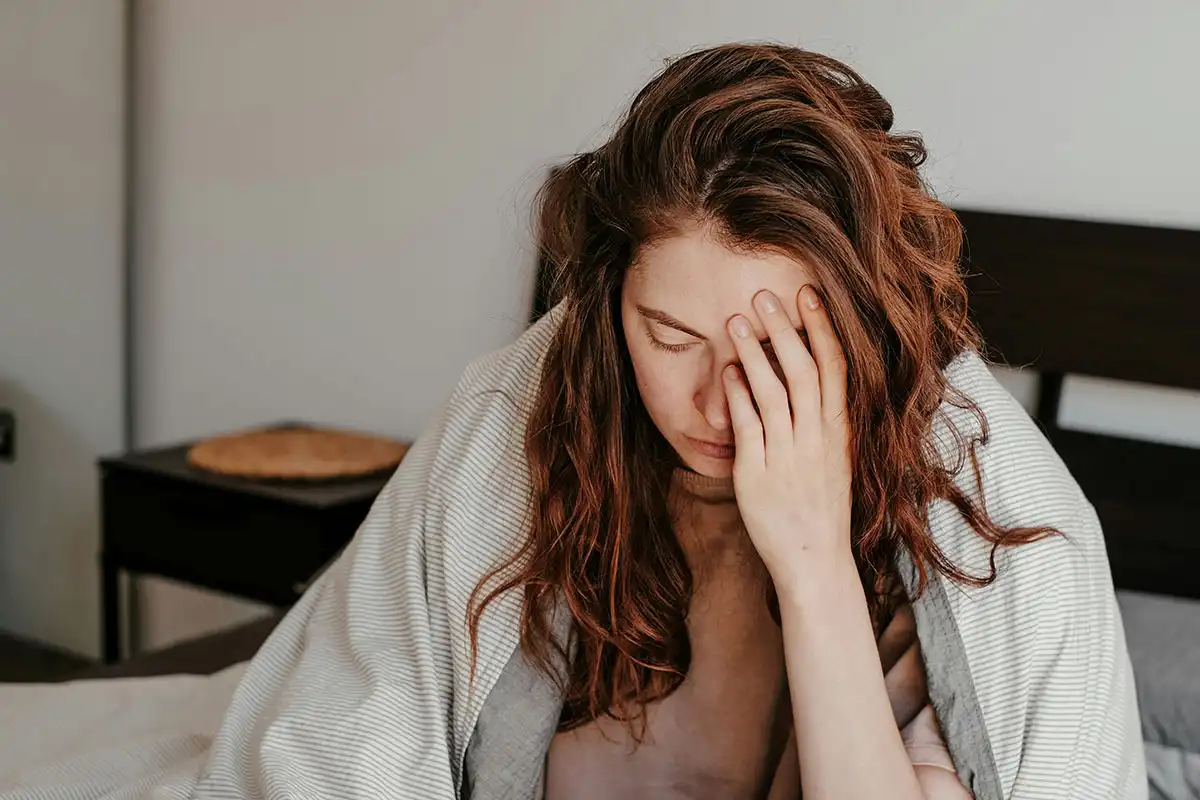Benzodiazepine Addiction Quiz
More than 30 million people in the United States use benzodiazepines. Further, more than 10% of benzodiazepine users have admitted to misusing the medication.
Commonly prescribed for anxiety and panic attacks, benzodiazepines can be physically and psychologically addicting. If patients use benzodiazepines for reasons other than prescribed indications, they could be at risk for dependency and subsequent withdrawal.
What Are Benzodiazepines?
Benzodiazepines are a type of prescription sedative. They have a calming effect, which is useful for patients who experience serious anxiety or panic. Practitioners may also prescribe the medication for other conditions:
- Seizures or non-seizure-like convulsions
- Insomnia or acute trouble sleeping
- General anesthesia
- Sedation before surgery or other procedures
- Muscle relaxation
- Alcohol withdrawal
- Drug-associated agitation
- Nausea and vomiting
- Depression
If you’re taking benzodiazepines, you should be careful not to take other medications that interact negatively with them. Often, drug interactions with benzodiazepines cause heavy sedation that slows the brain’s processes.
Alcohol, barbiturates, narcotics, and tranquilizers commonly present negative interactions for patients taking benzodiazepines.
Additionally, we may find an increase in benzodiazepine concentration with a decrease in benzodiazepine elimination through the liver. Put simply, too much of the medication builds up in the system because the body can’t get rid of any old medication.
Medications that slow liver elimination may cause this problem. This includes ketoconazole (Nizoral, Xolegel), valproic acid (Depakene, Stavzor), cimetidine (Tagamet), and fluoxetine (Prozac).
Antacids may reduce the rate of absorption of benzodiazepines in the intestines. By taking benzodiazepines and antacids hours apart, you may be able to avoid this interaction.
How Benzodiazepines Work
We do not know what the mechanism of action is for these medications. So, we don’t know how it works in the body. But, we do know that benzodiazepines seem to work by affecting neurotransmitters in the brain.
Neurotransmitters are the chemicals that nerves release in order to communicate with other nerves in the body. One of the most notable neurotransmitters is GABA (gamma-aminobutyric acid). This neurotransmitter suppresses the nerves as an inhibitor.
GABA is one of the primary neurotransmitters involved in the development of anxiety and panic disorders. Since benzodiazepines are effective for patients with these disorders, scientists believe that these medications may enhance the effects of GABA throughout the brain and spinal cord.
Common Types of Benzodiazepines
In the United States, there are multiple kinds of approved benzodiazepines. Here is the full list:
- Ativan (lorazepam)
- Dalmane (flurazepam)
- Doral (quazepam)
- Halcion (triazolam)
- Klonopin (clonazepam)
- Librium (chlordiazepoxide)
- Prosom (estazolam)
- Restoril (temazepam)
- Serax (oxazepam)
- Doral (quazepam)
- Tranxene (clorazepate)
- Valium (diazepam)
- Versed (midazolam)
- Xanax (alprazolam)

Side Effects of Benzodiazepines
No medication comes without the risk of side effects. Benzodiazepines are no different.
The most common side effects associated with benzodiazepines are sedation, dizziness, weakness, and unsteadiness. However, there are other side effects to consider:
- Transient drowsiness
- Depression
- Loss of orientation
- Headache
- Insomnia or trouble sleeping
- Confusion
- Irritability
- Aggression
- Excitement
- Memory impairment
If these side effects start to affect your day-to-day life, you should talk to your prescribing physician. He/She may decide to try a different benzodiazepine if you’re having a poor reaction to your current one.
Benzodiazepine Dependence
Dependence is a drug term that refers to someone’s need for a higher dose of a medication to get the desired effect. This is extremely common with benzodiazepines.
While dependence is an important component of addiction, it is not addiction in and of itself.
For example, patients with hypertension may develop a dependence on their blood pressure medications. This means that it may take a higher dosage to achieve a lower blood pressure. But, they cannot become addicted to these medications.
As for benzodiazepines, addiction is a worry. Additionally, you have to consider withdrawal if the patient were to abruptly stop their medications.
If you’re worried about dependence, addiction, or withdrawal, you should talk to your prescribing physician. They can help you determine whether you’re taking your medication as intended. And, they can provide clear guidelines for when you should take the medications.
How Can You Become Addicted to Benzodiazepines?
Drug addiction is a complicated brain disease that involves both physiological and psychological factors. While withdrawal from medication can remove the physiological factors of addiction, you can’t remove the psychological factors.
There is no cure for drug addiction, regardless of the substance a patient may be addicted to.
Ongoing drug addiction can lead to dangerous drug-seeking behavior. They may go to various providers for a prescription or illegally obtain the prescription elsewhere.
There are multiple consequences of benzodiazepine addiction, including relationship problems, family conflicts, and legal issues. Regardless of these consequences, people addicted to drugs will continue to seek them.
Here are some general signs of drug addiction:
- Drug-seeking behaviors, including asking for multiple prescriptions or obtaining drugs illegally
- Cravings for the drug
- Constantly thinking about the drug and how to get more of it
- Misusing the drug
- Signs of dependence and withdrawal
- Interference with normal life functions
- Relationship problems
- Legal issues
- Continued use of drugs despite personal issues
Certain individuals are more likely to develop an addiction than others based on biological, psychological, and social influences.
If you’re worried that you or someone you know may be displaying signs of drug addiction, you should speak with your prescribing physician as soon as possible. They can help you get the treatment that you need.

Benzodiazepine Pseudo-Addiction
Pseudo-addiction refers to the state that a patient may be in if their symptoms are not treated adequately.
Patients with severe conditions may not get all of the treatment they need from the current benzodiazepine prescription that they have. In turn, they may seek more medication to help calm their symptoms.
In these kinds of situations, the patients don’t have a true addiction. They aren’t seeking the drugs for pleasure. Rather, they’re looking to use the drug as it’s intended, even if it wasn’t their original prescribed amount.
Long-Term Use of Benzodiazepines
Patients with histories of panic and anxiety disorders may be fearful about becoming addicted to their benzodiazepine medications. Physicians may be worried about the same outcome for their patients.
However, many studies show that long-term benzodiazepine use is both effective and safe. Long-term use does not lead to addiction, because addiction is a separate disease process.
At the same time, benzodiazepines can trigger addiction in patients with a predisposition for the disease. If you have a family or personal history of addiction, you should talk to your physician about your options. There may be other medications that offer better choices for your condition.
With this in mind, benzodiazepines are safe and effective when patients use them as directed. If a patient decides to follow off-label use, this is a strong warning sign of addiction.
You should also keep in mind that needing a larger dose of your benzodiazepine prescription does not indicate addiction. The need for a larger dose is tolerance, which is normal for patients taking these kinds of medications.
Signs of Benzodiazepine Addiction
Benzodiazepines are highly addictive because of the calming effect they provide. Patients who suffer from anxiety and panic may be desperate to get a few minutes of calm thinking.
When addicted to these medications, patients may display several symptoms:
- Blurry vision
- Weakness
- Drowsiness
- Trouble thinking clearly
- Poor judgment
- Mood changes
- Risk-taking behaviors
- Multiple benzodiazepine prescriptions
- Obtaining non-prescribed benzodiazepines
- Unable to cut down on benzodiazepines use
- Combining benzodiazepines with other substances
Notice that an increased dosage of benzodiazepines does not indicate addiction. To reach the same effect, long-term benzodiazepine users may need a higher dosage.
If that dosage is decreased, the patient could go into benzodiazepine withdrawal, which is life-threatening. Patients undergoing medical detoxification should be under the direct care of a physician.

Diagnosing Benzodiazepine Addiction
Benzodiazepine addiction may also be referred to as hypnotic, sedative, or anxiolytic use disorder, especially in the presence of similar substances.
To get the diagnosis, you must have at least two of a list of eleven symptoms listed in the Diagnostic and Statistical Manual of Mental Disorders, 5th Edition (DSM-5):
- Using larger amounts of benzodiazepines over a longer period of time than originally intended
- Desiring to cut down use of benzodiazepines
- Spending a great deal of time obtaining benzodiazepines
- Cravings for the medications
- Failing to fulfill obligations
- Using benzodiazepines despite social issues
- Giving up or reducing previously important activities
- Using benzodiazepines in physically hazardous situations
- Taking benzodiazepines despite physical or psychological problems
- Developing a Tolerance for the medication
- Experiencing Symptoms of Withdrawal from the medication
These two (or more) symptoms must show up within a 12-month period.
If you believe that you or someone you know may fit these clinical criteria, you should contact a physician as soon as possible. They can help you figure out the diagnosis as well as the treatment.
Benzodiazepine Addiction Treatment
Addiction treatment involves professional therapy and counseling on top of physical treatment. Because addiction involves both physical and physiological symptoms, it’s important to combine treatment modalities.
Unfortunately, benzodiazepine addiction treatment isn’t straightforward. There isn’t a single treatment formula that works for every patient.
But, most treatment programs develop a treatment algorithm based on three principles:
Detoxification on its own cannot help the patient recover. There is still a psychological component to the addiction that the patient can’t ignore after being weaned off of the medication.
However, removing the medication from the patient’s body is the first step in the treatment process. Physicians want to ensure that the patient is stable enough to continue with psychiatric treatment.
While physical treatment may be similar for all patients with benzodiazepine addiction, psychiatric treatment may be extremely different. Different cases of addiction have differing degrees of risk. So, physicians have to treat each patient individually.
Depending on the risk assessment, patients may go into different treatment programs from in-patient hospital settings to out-patient home settings.
After a patient completes their detox program, they should continue with rehabilitation. The most common treatment after detoxification is cognitive-behavioral therapy (CBT). This kind of treatment focuses on helping the patient identify negative thought patterns and/or triggers that could be leading to their substance abuse.
There are other treatment options as well:
- Contingency management
- Motivational interviewing
- Group therapy
Most of these problems follow a 12-step approach. Once the patients complete these programs, aftercare will begin.
Aftercare may include continued counseling, group therapy, or other treatment meetings. The hope is to continue strengthening the patient to prevent future relapse. This care is all put together to increase the patient’s chances of full recovery.

Getting Help For Benzodiazepine Addiction
The treatment styles of rehabilitation programs vary depending on the location and professionals involved. Those seeking treatment for themselves or loved ones should consider their options.
Hospitals may offer high-risk patients a safe environment to complete detoxification. At this location, physicians can constantly monitor them and prevent complications.
Inpatient detox centers are dedicated treatment facilities that have extensive experience in treating individuals suffering from addiction. Patients who are detoxing will live at the facility during their treatment while medical personnel monitor them.
Inpatient addiction treatment offers comprehensive programs with medical support and intensive therapy. After the detoxification phase, these programs offer psychological treatment for long-term care.
Intensive outpatient programs resemble inpatient programs but allow their patients to go home at night. Patients attend therapy during the day. For very low-risk patients, the doctor’s office may be good enough to help them taper off their medications. Patients who are taking low doses and/or have been taking the medications for a short amount of time may not experience serious withdrawal symptoms.
In these cases, your prescribing physician can put you on a tapering schedule. Throughout the taper, you can check in with your physician for health monitoring. You may also have to attend regular therapy.
Benzodiazepine Withdrawal Timeline
Benzodiazepine withdrawal occurs when someone who has benzodiazepine dependence stops taking the medication. Withdrawal is the physical manifestation of the removal of the medication.
Most benzodiazepine withdrawal symptoms start within 24 hours of the patient ceasing use. These symptoms may last a few days to several months, depending on how long the patient was dependent on the medication. The dosage used may also affect the withdrawal symptoms.
Unfortunately, there isn’t a specific timeline for benzodiazepine withdrawal. Every patient experiences their own path during withdrawal.
Some patients develop withdrawal syndrome from benzodiazepine withdrawal. This leaves patients with horrible symptoms for months, even years, after coming off of the medication.
Symptoms of Benzodiazepine Withdrawal
A diagnosis of benzodiazepine withdrawal falls within the DSM-5. It states that the patient must have “clinically significant distress or impairment in social, occupational, or other important areas of functioning.”
Along with this, they must showcase one of these signs or symptoms:
- Autonomic hyperactivity (sweating, fast heart rate)
- Hand tremors
- Nausea or vomiting
- Transient visual, tactile, or auditory hallucinations or illusions
- Psychomotor agitation
- Anxiety
- Grand mal seizures
Benzodiazepine withdrawal is life-threatening. Patients can die from the physical manifestations that come with medication withdrawal.
All patients going through withdrawal should be under the supervision of a physician. Many of these patients have to spend an extensive amount of time in the intensive care unit (ICU). There, they can receive the close medical attention they need while they recover.
Dangers of Benzodiazepine Withdrawal
Benzodiazepine withdrawal can lead to a myriad of symptoms that can put the patient in danger. From harmful hallucinations to status epilepticus, there are multiple conditions that can develop from benzodiazepine withdrawal.
Patients may experience fluctuations in blood pressure, blood sugar, and pulse. They may also develop infections or have depleted oxygen levels. The early signs of benzodiazepine withdrawal may mimic anxiety disorders. This may lead to misdiagnoses. When this happens, the patient may go untreated.
Often, patients in early withdrawal may receive a benzodiazepine prescription to help with their symptoms since benzodiazepines can help with short-term panic. While this may help ease the symptoms of withdrawal as a taper, it does not give the patient the medical attention they need.
Treatment For Benzodiazepine Withdrawal
There is no single medication that is FDA-approved for the treatment of benzodiazepine withdrawal. However, there are several medications that may help manage the symptoms of withdrawal:
- Selective serotonin reuptake inhibitor (SSRI): antidepressant medication used for anxiety
- Anticonvulsants: useful for patients who experience seizures or status epilepticus
- Beta-blockers: may stop tremors in patients experiencing withdrawal
- Catapres (clonidine): alpha-agonist that can help maintain normal blood pressure in patients who experience high blood pressure during withdrawal
- Zofran (ondansetron): may treat nausea during withdrawal to prevent fluid loss from vomiting
Some medical professionals opt for using pregabalin (Lyrica), which is traditionally a nerve pain medication. This off-label use may help patients with benzodiazepine withdrawal but it is not approved by the FDA yet.
Multiple trials are currently running to see how withdrawal patients respond to pregabalin (Lyrica). Although unhelpful for addiction treatment, some physicians may decide to taper withdrawal patients off of their benzodiazepines.
By putting the patient back on their prescription dose in the short term, the physician can stop the symptoms of withdrawal. From there, the physician can restart the withdrawal process in a controlled environment. By slowly tapering during the process, they can reduce symptoms while limiting physical danger.

Get Treatment for Benzodiazepine Addiction
Benzodiazepines are important medications for patients struggling with anxiety or panic disorders. However, their propensity for tolerance, dependence, and abuse are serious factors to consider before and while using these medications.
If you believe that you or someone you know could be at risk of or currently experiencing benzodiazepine addiction, it’s important to get treatment as soon as possible. Contact us and get help now.
